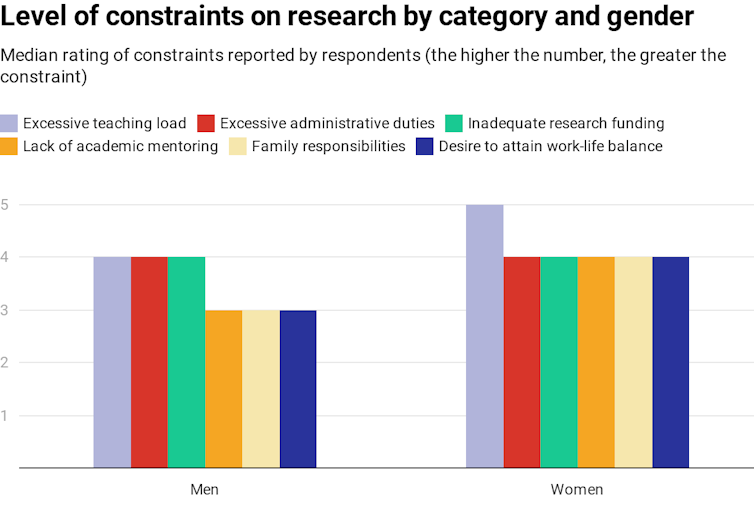How COVID is widening the academic gender divide
From the first rumblings of its spread, COVID-19’s impact on women academics was immediate. In a sign of the gendered nature of the pandemic’s impacts, men’s research submissions to academic journals almost instantly increased by 50%, single-author articles by women dropped.
The structure of labour and reward at universities has long followed gendered lines. During the pandemic, these lines have become more entrenched.
We brought our research together to map how resources at Australian universities are distributed along gendered lines. Our work shows the impacts of the pandemic have compounded the inequities of that resource distribution.
Why resource distribution matters
Ostensibly, teaching is a central function of universities. Yet the number of publications you amass and the amount of money you earn through research grants are valued more. Year to year, these measures affect your research and teaching time allocations (many universities penalise low publication rates with increased teaching load), teaching support, applications for promotion, grants and, in this climate, keeping your job.
Academic research and publication require resources: time, money and networks.
Before COVID-19, resources were already tight. Continued cuts to research funding have led to massive financial gaps.
The resulting restructuring left fewer staff to deliver teaching and less money and time to allocate. And as revenue from international students became an economic necessity for many tertiary institutions, teaching loads did not decrease.
Unequal resources reinforce gender inequity
In this climate, a forthcoming research paper by two of us (Khan and Siriwardhane) shows the most important barrier to academic women’s career progression is resource distribution. Surveying over 500 academics (men 51%, women 49%) in the STEMM (science, technology, engineering, mathematics and medicine) and business disciplines across Australia, this research found these resources were unevenly spread before COVID-19.
Female researchers reported excessive workloads were the greatest constraint on undertaking research (male median rating 4, female median 5, with the higher number indicating a higher level of constraint). But lack of academic mentoring (male median 3, female median 4) and weight of family responsibilities were significant barriers to publication (male median 3, female median 4) and thus to career progression.
Source: https://theconversation.com/how-covid-is-widening-the-academic-gender-divide-146007


Không có nhận xét nào: